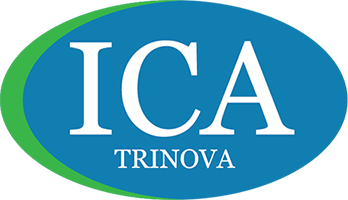1 Beavers St.
Newnan, GA 30263
Cl02 Absorbtion in Potatoes
Chlorine dioxide is used in the food industry to extend shelf-life by decreasing the risk of foodborne infections and microbial damage. FruitGard® chlorine dioxide fumigant can be used to treat potatoes preventing spoilage from microorganisms. The objective of this experiment was to determine the chlorine dioxide mass transfer rate from the gas phase to the surface of potatoes. A two foot column was filled with 18kg of dry or wet potatoes. Both brown and red potatoes were use in the experiments. Four different FruitGard® application rates (grams of media/Kg potato) were use: 0.5, 2, 5, and 20. The doses were not to determine efficacy, but for the analysis of mass transfer rates. For the 20g/kg potato experiment, an Optek analyzer was used to measured the ClO2 concentration at the outlet of the column.
Cl02 and Potato Storage
Chlorine dioxide is a disinfectant compound widely used in multiple industries (e.g. wastewater treatment plants, wood pulp plants, swimming pool water purification, and vegetable/fruit process plants) as a general biocide. Chlorine dioxide can kill large populations of fungi, bacteria, viruses, and algae depending on the application rate and timing. This product is used in potato storage as an aid in the treatment of late blight (Phytophthora infestans)-infected tubers. It is only effective as a surface contact biocide and has no systemic properties. Check on current label status and recommendations prior to application to potatoes.
Cl02 in Post Harvest Sweet Potatoe Treatments
Sweetpotato production in the United States is limited by several posthar- vest diseases, and one of the most common is Fusarium root rot. Although Fusarium solani is believed to be the primary causal agent of disease, numerous other Fusarium spp. have been reported to infect sweetpotato. However, the diversity of Fusarium spp. infecting sweetpotato in North Carolina is unknown. In addition, the lack of labeled and effective fungi- cides for control of Fusarium root rot in sweetpotato creates the need for in- tegrated strategies to control disease. Nonetheless, epidemiological factors that promote Fusarium root rot in sweetpotato remain unexplored.
Cl02 Microbial Decontamination for Potatoes
During harvesting, potatoes may become injured and susceptible to microorganisms. When in storage, bacteria and fungi that were potentially introduced during harvesting may contaminate potatoes.
The objective of the study was to develop a novel, simple gaseous chlorine dioxide (CO2)method that could effectively control microorganisms on potatoes during storage. Gaseous ClO2 was generated by combining an equal amount of impregnates of sodium chloride and activating acids in a sachet without any solution or equipment. After activation, the sachet was placed in the application area. Decontamination efficiency of ClO2 on natural microbiota including total bacteria, yeasts and molds, and inoculated Pseudomonas aeruginosa on potatoes was investigated. Different treatment using 2, 3, 4g of materials and various time intervals (2.5 and 5hr) to generate 16, 20, 24, 30, 32, and 40mg/l of ClO2 was used
Cl02 Soft Rot Treatments for Sweet Potatoes
Rhizopus soft rot, caused primarily by Rhizopus stolonifer, is one of the most common postharvest diseases of sweetpotato and is often considered the most devastating. Traditionally, Rhizopus soft rot has been effectively controlled using postharvest dips in dicloran fungicides; however, due to changes in market preferences, use of these fungicides is now limited. This, along with the lack of labeled and effective fungicides for control of Rhi- zopus soft rot in sweetpotato, creates the need for integrated strategies to control the disease.

